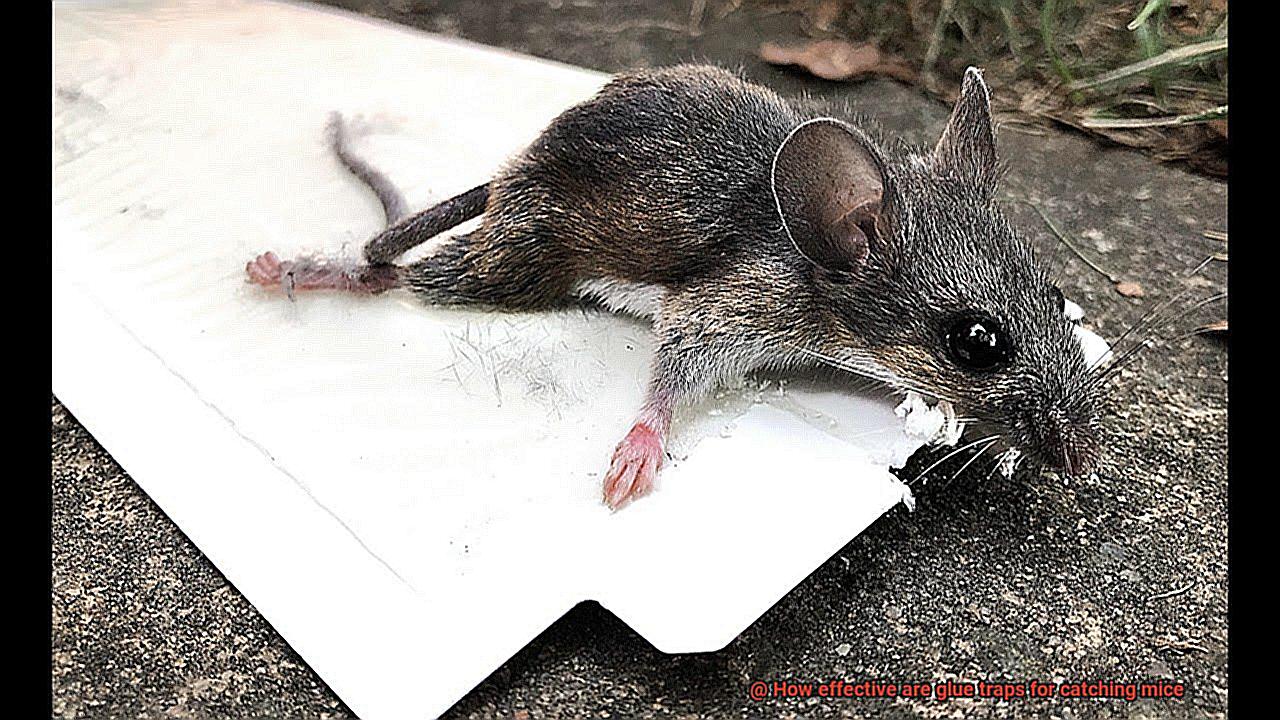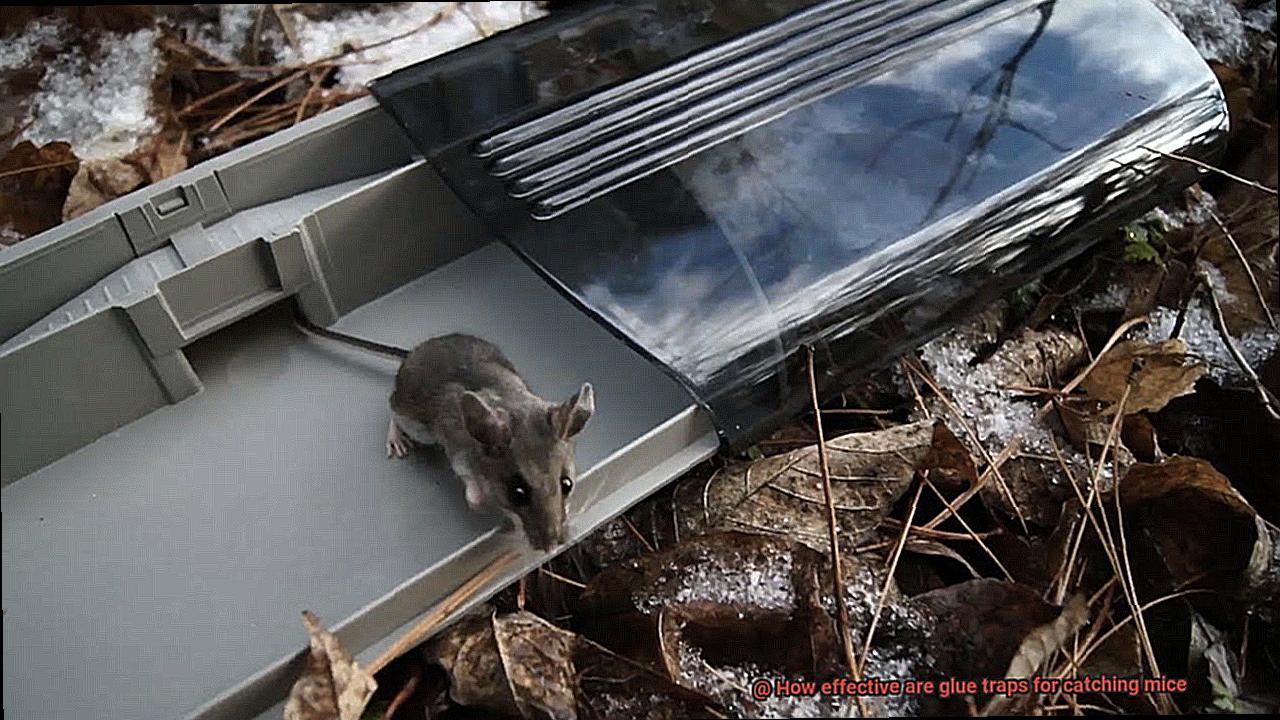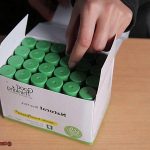Picture this: you’re minding your own business, enjoying a peaceful evening in the comfort of your home, when suddenly, you spot it. A tiny, beady-eyed mouse scurrying across your floor as if it owns the place. Panic sets in, and you need a solution fast. Enter glue traps – those sticky saviors that promise to put an end to your mouse mayhem.
But hold on just a minute. Before you go slapping down those adhesive wonders, let’s take a closer look at their effectiveness. Do they truly live up to the hype? In this blog post, we’ll dive deep into the world of glue traps and uncover whether they have what it takes to outsmart these mischievous rodents.
We’ll explore the pros and cons of these sticky contraptions, revealing their secrets one by one. We’ll even get scientific, examining how these traps work their magic on those nimble little mice. And don’t worry – we’ve got some expert insights up our sleeves too.
So buckle up and get ready for a wild ride through the world of glue traps. By the end of this post, you’ll know whether these sticky wonders are worth your time and hard-earned cash. Say goodbye to those furry invaders once and for all – or at least until they find another way to sneak back in.
What are Glue Traps?
Contents
Glue traps might just be the solution you need. These sticky traps have gained popularity in the world of pest control, offering convenience and effectiveness in catching mice and other small pests. In this article, we will delve into what glue traps are, how they work, their advantages and disadvantages, and important safety considerations to keep in mind.
What are Glue Traps?
Glue traps, also known as sticky traps or adhesive traps, are flat surfaces coated with a formidable adhesive substance designed to trap and immobilize rodents upon contact. Constructed from materials like cardboard or plastic, these traps come in various sizes to cater to different pest control needs.
How Do Glue Traps Work?
When a mouse steps onto a glue trap, its feet immediately become ensnared by the sticky adhesive surface, leaving it unable to escape. The more the mouse struggles to free itself, the more entangled it becomes in the glue, making it easier for homeowners or pest control professionals to remove and dispose of the captured pest.
Advantages of Glue Traps:
One of the main advantages of using glue traps is their ease of use. Unlike other trapping methods, there is no need for bait or complicated settings. Simply place the traps strategically along walls or in areas where mice are commonly seen, and let the adhesive do its job.
Glue traps can also complement other pest control methods. When combined with snap traps or electronic traps, they create a multi-faceted approach to capturing mice and increase overall effectiveness. Furthermore, glue traps serve as excellent monitoring tools to identify areas where rodents are most active, providing valuable insights for targeted pest control measures.
Disadvantages and Safety Considerations:
It’s important to consider some limitations and potential drawbacks of using glue traps. While they effectively capture mice, they do not offer an immediate or humane method of killing rodents. The trapped mouse may experience distress and discomfort while trying to escape from the adhesive. To ensure ethical treatment, it’s recommended to check the traps regularly and swiftly dispatch any captured pests.
There is also a risk of unintentionally capturing non-target animals, such as birds or pets. To prevent this, place the traps in areas inaccessible to these animals or use protective covers. By taking these precautions, you can minimize the chances of unintended captures and ensure the safety of other creatures.
Additionally, some people may find glue traps unappealing or unhygienic due to the potential mess and sight of trapped pests. It’s crucial to promptly remove and dispose of any captured mice to maintain a clean environment and prevent potential health risks associated with decomposing rodents.
Factors Affecting the Effectiveness of Glue Traps
When it comes to dealing with a mouse problem in your home or business, glue traps can provide a convenient and effective solution. These traps use a strong adhesive to immobilize mice upon contact, making it easier to remove and dispose of them. However, there are several factors that can affect the effectiveness of glue traps, and understanding them is essential for maximizing your chances of success.
First and foremost, the placement of the glue traps is crucial. Identifying the areas where mice are most likely to travel, such as along walls, near food sources, or in dark corners, is key. Placing the traps in these high-traffic areas significantly increases the chances of capturing the mice. Additionally, using multiple traps in one area can further enhance your chances of success.
The size and shape of the trap also play a role in its effectiveness. Larger traps provide a bigger surface area for the mouse to get stuck on, increasing the likelihood of capture. Furthermore, traps with irregular shapes or multiple sticky surfaces offer more opportunities for the mouse to come into contact with the adhesive, making them more effective overall.
The quality of adhesive used on glue traps is another important factor to consider. A strong and sticky adhesive ensures that once a mouse comes into contact with it, there is no escape. High-quality adhesives should remain effective for extended periods, even in varying temperatures and humidity levels.
Some glue traps come with built-in attractants, such as food scents or pheromones, which entice mice towards them. These attractants can significantly increase the effectiveness of glue traps by luring mice towards the trap and encouraging them to make contact with the adhesive.
Environmental factors can also impact how effective glue traps are in catching mice. High levels of dust or debris can reduce the stickiness of the adhesive, making it less effective at trapping mice. Additionally, extreme temperatures or humidity levels can also affect the adhesive’s performance.
Understanding mouse behavior is crucial when using glue traps. Some mice may be cautious and avoid glue traps altogether, while others may attempt to jump over or navigate around them. By observing mouse behavior and adapting trap placement accordingly, you can increase the chances of successful captures.
Regular maintenance and monitoring of glue traps are essential for their effectiveness. Traps should be checked frequently to remove captured mice or any debris that may hinder their performance. Additionally, replacing traps when necessary ensures that they remain in optimal condition for catching mice.
How Do Glue Traps Work?
Glue traps, those flat boards or trays coated with a sticky adhesive substance, are a commonly used pest control device for catching mice and other small animals. These traps work by using a highly viscous adhesive, usually made of natural or synthetic polymers, that makes it extremely difficult for the trapped animal to escape.
When a mouse steps onto a glue trap, its feet become stuck to the adhesive surface. The more the mouse struggles, the more entangled it becomes in the glue, making it nearly impossible for it to free itself. Some glue traps are designed with additional features such as scent attractants or bait stations, which lure mice onto the trap.
The effectiveness of glue traps depends on several factors. First and foremost, the size and strength of the adhesive are crucial in ensuring that the mouse remains trapped once caught. A strong adhesive makes it difficult for the mouse to escape, even if it tries to chew or bite its way out.

Placement of the trap is also important. It should be strategically placed in areas where mice are known to frequent, such as along walls or near food sources. Using multiple traps in different locations can increase the chances of catching mice.
Mouse behavior plays a role as well. Some mice may be cautious and avoid glue traps altogether, while others may be more curious and easily lured onto the trap.
Regular maintenance is necessary for glue traps to remain effective. Once a mouse is caught, it is important to dispose of the trap properly and replace it with a new one if needed.
While glue traps can be effective in catching mice, ethical concerns should be considered. They can cause suffering and distress to trapped animals. If using glue traps, it is recommended to check them regularly and release any trapped animals safely and humanely. Alternatively, there are other pest control methods available that may be more humane, such as live traps or professional extermination services.

Placement of Glue Traps
Glue traps, adorned with their sticky adhesive surfaces, have emerged as a favored weapon in the battle against mice. These cost-effective and user-friendly tools hold promise in luring and capturing these pesky critters. However, to achieve optimal results, one must master the art of glue trap placement. In this article, we will delve into the intricacies of strategic placement and explore the various factors that significantly impact your success in outsmarting those cunning creatures.
Identify High-Traffic Areas:
Begin by carefully observing your surroundings for telltale signs of mouse activity. Look for their droppings, gnaw marks on furniture or wires, or even chewed-up packaging. These subtle yet revealing clues will help you identify the areas where mice are most active—your prime hunting grounds.
Follow the Mice Pathways:
Mice have a penchant for scurrying along walls and edges, seeking solace in familiar territories. To increase your chances of trapping them, position your glue traps flush against walls in areas where these crafty rodents are known to travel. By aligning your tactics with their natural instincts, you set yourself up for success.
Target Entry Points:
Windows, doors, and other openings serve as gateways for mice to infiltrate your sanctuary. Intercept their sneaky advances by placing glue traps strategically near these entry points. By thwarting their initial invasion attempts, you prevent their foothold on your property from gaining traction.
Avoid Disturbance and Attractants:
To ensure the utmost efficacy of your glue traps, steer clear of placing them in high-traffic areas or near potential food sources that may inadvertently attract unintended targets. Additionally, exercise caution when positioning traps to keep them out of reach and hidden from direct view behind furniture or appliances—shielding them from curious hands or prying eyes.
Utilize Multiple Traps:
Bolster your chances of triumph by employing a multi-pronged approach. Scatter multiple glue traps throughout the affected area, spacing them at regular intervals. This strategic deployment increases the odds of unsuspecting mice stumbling into your snare, leaving them with no escape.
Regular Monitoring and Relocation:
Vigilance is key in this battle of wits. Regularly check your traps to assess their effectiveness. If a trap remains bare after a reasonable period, consider relocating it to a more promising location—realigning your tactics to match the ever-shifting patterns of the elusive mice. Adaptation ensures your victory.
Proper Disposal and Hygiene:
Dispose of captured mice and used glue traps promptly and responsibly. By doing so, you maintain a hygienic environment and eliminate any potential health risks associated with handling deceased rodents. A clean battlefield is essential for future engagements.
Limitations of Glue Traps
Glue traps may seem like a convenient solution for catching mice, but they come with their fair share of limitations. Before you rush out to stock up on these sticky devices, it’s important to understand their drawbacks. So, let’s take a closer look at the limitations of using glue traps to catch mice.
First and foremost, one limitation of glue traps is that they are designed specifically for small rodents like mice. If you’re dealing with larger rodents such as rats, these traps may not be effective. Rats can easily escape or drag the trap away, rendering it useless in your battle against these bigger pests.
Placement is another crucial factor to consider when using glue traps. You need to strategically place them along walls or in areas where mice are known to travel. If you don’t position them correctly, the mice may simply avoid them altogether, leaving you frustrated and mouse-infested.
One of the most pressing limitations of glue traps is that they only catch one mouse at a time. If you’re dealing with a significant infestation, you’ll need multiple traps and a whole lot of patience to effectively control the population. It can become a time-consuming process that requires constant monitoring and relocation of traps.
Another major concern with glue traps is their inhumane nature. Once caught, the mice suffer a slow and painful death as they struggle to free themselves from the adhesive. This raises ethical concerns for many people who prefer more humane methods of pest control.
Let’s not forget about the mess factor. Glue traps can be messy and difficult to handle. When a mouse gets stuck on one, it can be challenging to remove it without causing further harm to the animal or getting the glue on your hands or clothing. It’s not a pleasant task by any means.
Lastly, glue traps are not a long-term solution for dealing with a mouse problem. While they may help in catching a few mice, it’s essential to address the root cause of the infestation. This means sealing entry points, removing food sources, and implementing preventive measures to ensure you don’t have a repeat mouse invasion.
Other Mouse Control Methods
Dealing with a mouse infestation can be overwhelming, but fear not. In addition to glue traps, there are several other methods available to help you eliminate these pesky rodents. From classic snap traps to modern electronic devices, let’s explore the various mouse control methods in this article. Together, we’ll find the best solution for your mouse problem.
Snap Traps: Traditional and Reliable
Snap traps are a common choice among homeowners dealing with a mouse invasion. Cost-effective and easy to use, these traps can be highly effective when strategically placed. However, proper placement and regular monitoring are essential to avoid accidental harm to pets or children.
Electronic Traps: A Modern Approach
Looking for a more humane option? Consider electronic traps. These battery-operated devices deliver an instant electric shock to mice upon contact, ensuring a quick and painless death. Although they tend to be more expensive, they offer a more humane alternative to traditional snap traps.
Ultrasonic Devices: Debunking the Myths
Ultrasonic devices have gained popularity as a mouse repellent method. Emitting high-frequency sound waves that mice find unpleasant, these devices claim to drive them away. However, their effectiveness is still debated among experts, with some studies suggesting minimal impact on mouse behavior.
Natural Deterrents: Chemical-Free Solutions
For those seeking a chemical-free approach, natural deterrents could be ideal. Strong-smelling substances like peppermint oil, mothballs, and ammonia are believed to repel mice due to their overpowering scents. While not a standalone solution, they can be used alongside other control methods.
Exclusion Methods: Preventing Infestations
Prevention is key. Exclusion methods aim to seal off entry points to prevent mice from entering your home or business. This includes sealing cracks and gaps, installing door sweeps, and repairing damaged screens or vents. Combining exclusion with other control methods is crucial for long-term mouse prevention.
Comparison to Other Trapping Methods
When it comes to trapping mice, there are several methods to choose from. Glue traps, one of the most common options, have their advantages and disadvantages compared to other trapping methods.
Snap traps are a popular alternative to glue traps. These traps work by snapping shut when a mouse triggers the mechanism. They are highly effective in catching mice swiftly and humanely. However, snap traps require manual resetting after each catch, which can be time-consuming. Additionally, there is a risk of injuring or killing the mouse without an instant kill.
Electronic traps are another option to consider. These traps use an electric shock to kill mice instantly once they enter the trap. They are highly effective and eliminate the need for manual resetting. However, electronic traps tend to be more expensive than glue traps, making them less suitable for those on a budget.
For individuals who prefer a humane approach, live-catch traps are available. These traps are designed to capture mice alive so they can be released elsewhere. While this may seem like a compassionate solution, live-catch traps require regular monitoring and releasing the captured mouse far away from your property, as it might return or cause issues elsewhere.
Poison baits are also commonly used to trap mice. These baits contain toxic substances that kill mice when ingested. While they can be effective in reducing mouse populations, there is a risk of harming other animals and children if not handled properly. Additionally, poisoned mice may die in hidden areas, leading to unpleasant odors and potential sanitation issues.
Ultrasonic devices are another option for trapping mice. These devices emit high-frequency sound waves that claim to repel mice. However, their effectiveness is highly debated, with some studies showing limited impact on mouse behavior. They are often used as a preventive measure rather than a trapping method.
In comparison, glue traps are cost-effective, readily available, and easy to use. However, their effectiveness can vary depending on the specific brand and size of the trap. Some mice may escape from glue traps by tearing themselves free or dragging the trap around, which can result in injury or a messy cleanup process.
Ethical Considerations
Imagine dealing with a mouse infestation in your home. Desperate for a quick solution, you consider using glue traps. But have you thought about the ethical implications? In this blog post, we’ll delve into the ethical considerations of using glue traps to catch mice. We’ll also explore alternative methods that prioritize animal welfare while effectively addressing pest control.
Animal Suffering:
Glue traps may be effective, but they subject trapped mice to immense suffering. Research reveals that these creatures experience distress, agony, and even self-amputation in extreme cases. The prolonged struggle leads to stress, dehydration, and starvation. Can we morally justify causing such prolonged suffering for the sake of pest control?
Environmental Impacts:
Glue traps are indiscriminate, snagging not only mice but also unintended species like birds, reptiles, and small mammals. This poses a risk to non-pest species that may have ecological importance or protected status. Accidental trapping disrupts delicate ecosystems and undermines conservation efforts.
Inhumane Release:
Once caught on a glue board, there is no humane way to release a mouse without causing further harm or injury. Attempts to remove the animal often result in tearing its skin or fur, inflicting additional suffering. Euthanasia becomes the only viable option – a difficult ethical dilemma.
Public Perception:
Using glue traps can lead to negative public perception of pest control practices. The sight of trapped and struggling animals distresses individuals who value animal welfare. Employing such methods may tarnish the reputation of businesses or individuals associated with them, resulting in public backlash.
MGbH2dzR1Y0″ >
Conclusion
In conclusion, glue traps can be an effective method for catching mice. They are designed to immobilize the rodents upon contact with the sticky surface, making it difficult for them to escape. The strong adhesive nature of the trap ensures that once a mouse is caught, it will not be able to free itself easily.
Glue traps offer several advantages over other methods of mouse control. Firstly, they are easy to set up and require no additional bait or poison. This makes them a convenient option for those who prefer a simple solution. Secondly, glue traps are non-toxic and safe to use around children and pets, unlike some chemical alternatives.
However, it is important to note that while glue traps can be effective, they may not always guarantee immediate success. Some mice may manage to escape from the trap by tearing off their fur or limbs in desperate attempts to break free. This can result in injury and suffering for the trapped mouse.
Furthermore, glue traps do not address the root cause of a mouse infestation. They only serve as a temporary solution by capturing individual mice. If you have a persistent mouse problem, it is crucial to identify and eliminate their entry points and food sources to prevent further infestations.
In summary, glue traps can be an effective tool for catching mice due to their simplicity and safety compared to other methods.






